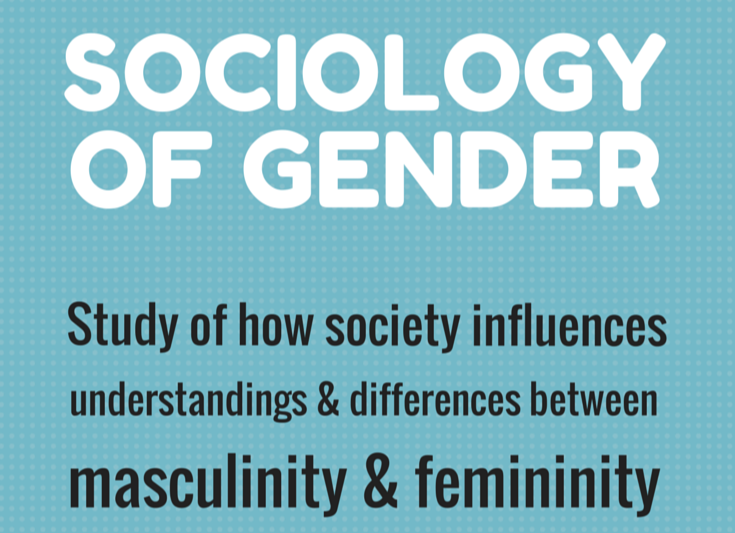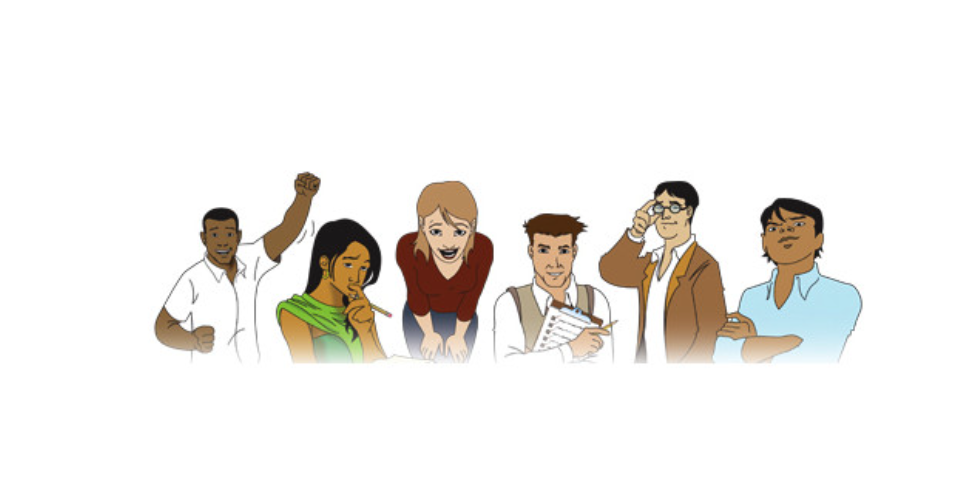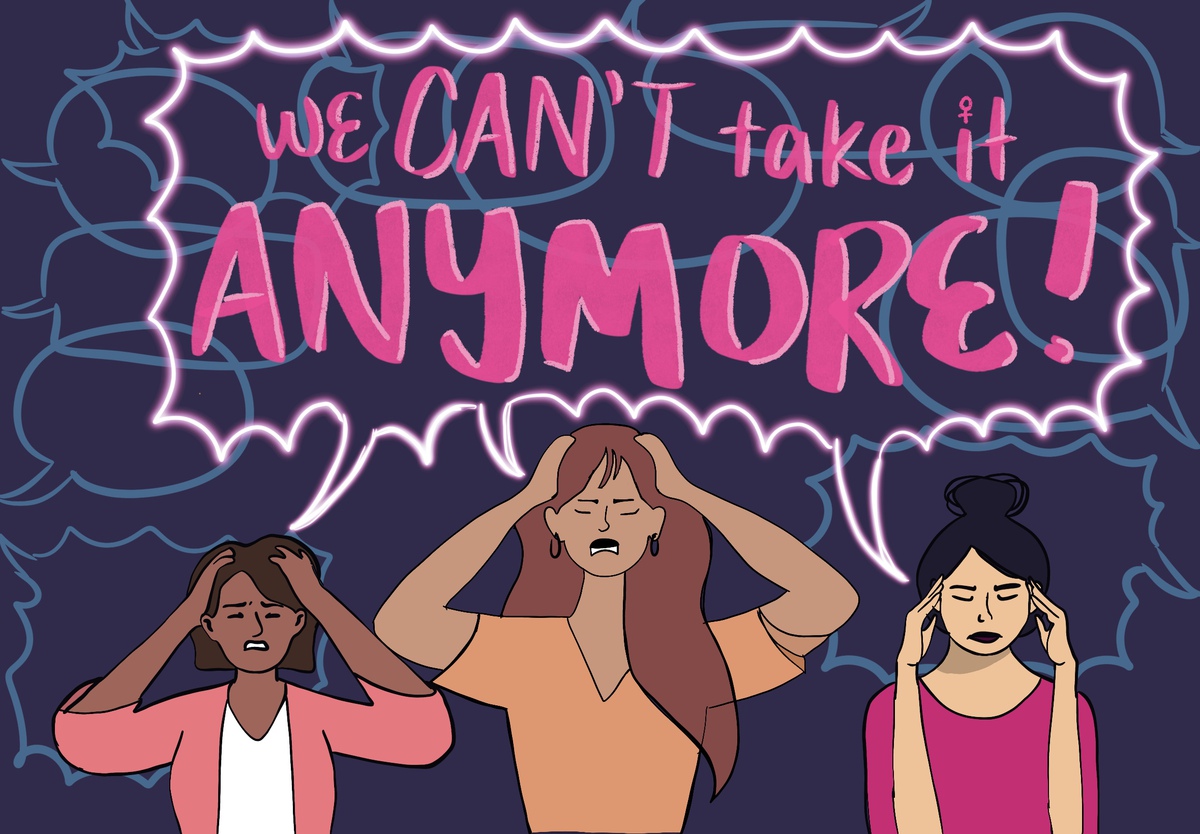By Carmen Chang,
From childhood, society and family impose certain patterns, rules, and expectations on boys and girls based on their sex, such as colors, toys, future professions, and, of course, their manner of speaking. In this way, a distinct “masculine” way of speaking and a distinct “feminine” way of speaking are created. As we have seen previously, Lemus (2011:13-16) denies the idea that language shapes our worldview, but isn’t a girl conditioned to feel subordinate to men when she learns that the feminine form is derived from the masculine? This notion resembles the story of Eve being created from Adam, and we can add that the order in which something is presented is related to the importance attributed to it. For example, in the end credits of a movie, secondary actors are never listed first; likely, the first name we see is given the most consideration and prestige. The same occurs when we place the masculine before the feminine, suggesting subliminally that what comes first holds greater significance, and thus, the masculine is instinctively placed in a position of implicit superiority.
From the most ancient societies, men have learned to operate outside the family sphere and have developed in economic, political, religious, social, and wartime domains, thus, enriching their conversation topics and manner of speaking. Conversely, women have employed a more limited vocabulary and speech for their particular social sphere: the home, the kitchen, the family, and child-rearing. A particular case illustrating that society itself influences our behavior, attitudes, and language is that of the Malagasy society:
“To demonstrate that societal roles assigned to men and women determine their actions and language, consider the example of the Malagasy people. Keenan (1974) reports that among the Malagasy (natives of Madagascar whose language is of Malayo-Polynesian origin), men use language subtly, strive to maintain good communications and relationships with others, are discreet, and consider themselves good orators. Malagasy women, on the other hand, speak directly, express anger quickly, avoid circumlocutions, and get straight to the point. This language use is the opposite of what is described for patriarchal societies, and anyone might say that women hold a significant and powerful position in Malagasy society. However, this is not the case. Among the Malagasy, direct speech is associated with the loss of tradition and the acquisition of contemporary customs. In this society, women are inferior to men and do not have access to power because the most valued characteristics of language are subtlety and delicacy in speaking (traits of masculine language). The example of the Malagasy demonstrates that masculine and feminine speech characteristics are not innate but acquired from the cultural environment in which one is raised.”

Regarding education, these adult roles begin to develop in childhood: there are certain patterns, behaviors, attitudes, and stereotypes that families, especially parents, transmit to children. For example, girls’ and boys’ games have different focuses; girls’ games are exclusive to them, while boys’ games are suitable for everyone and tend to be more competitive. The same happens with language; feminine language is exclusive to women, as in the word “todas” (all-female), while the masculine is valid for both genders.
As previously mentioned, linguistic sexism is visible in the realm of conversation and the specific ways men and women speak. Lemus (2011:15) uses the example of the United States, where women often seek men’s approval by adding the question “Right?” at the end of their statements, which rarely happens with men unless in superior relationships. Similarly, women do not typically interrupt men when speaking, but men tend to do so. According to Kakoff (cited by Lemus, 2011:15), this is the result of linguistic patterns that children learn at home, in school, and on the street. It reflects the real supremacy of men over women in most societies, from the most traditional to the most modern.
Other conversational differences include that men tend to be more direct in their speech, lead conversations, choose discussion topics, use less ornate and more obscene language, while women use more circumlocutions, refined language, euphemisms to avoid obscene words, and often avoid taboo topics. This is evident in Salvadoran Spanish, where there are practically exclusive expressions for men and others for women. For example, in El Salvador, men use the word “mierda” (shit), while women prefer to use “bolado” or “chunche” (thing). “Cfr., Alcánzame esa mierda, Give me that shit (man) vs. Alcánzame ese bolado, Give me that thing (woman).” “In this same society, women tend to use more diminutives than men.

These words include: “un ratito” (a little while), “la cachuchita” (the little cap), “el boladito” (the little thing), etc. According to Geoffroy Rivas (1978, cited by Lemus, 2011:15):
“The explanation seems to be more of social origin than linguistic substrata. Many women like to speak ‘small’, not only using diminutives but also pretending the voice (i.e., making it higher-pitched). Women are taught from a young age to be refined in their speech and are even required to have a higher tone of voice than boys. By speaking with diminutives, they make their speech more ‘small’.”
Even in modern society, the dominance of the means of production and subsistence by men persists. Similarly, the distinction in language used by men and women is further accentuated by access to education. Men have more opportunities for academic training than women, which allows the former to remain the more powerful group. On the one hand, men control the means of production, conduct commercial exchanges, and run businesses. On the other hand, women continue to occupy a secondary role in patriarchal society. “As long as this unequal relationship between men and women exists, differences in speech will continue, and language use will remain anthropocentric“. Therefore, it is necessary for society to change the social system so that both genders have the same educational opportunities and to change the paradigms that prevent women from thriving equally in the workforce. It is crucial for parents to educate their children without emphasizing role differences between men and women, avoiding activities at home, toys, punishments, examples and freedoms that continue to accentuate inequalities in duties and rights among their children.
While it is true that society establishes certain norms in language use according to social context or the sex of the speakers, we must not forget that culture, family environment, received education and the language acquisition process also influence people’s speech, as we can see in the following example:
“Mothers themselves tell their sons that they speak like girls when they use certain linguistic patterns associated with feminine use (cfr., expressions like ‘divine’, ‘lovely’, ‘I’m fascinated’ often generate ridicule or reprimand from other children or adults in many cases).”
Reference
-
Lemus Jorge E. Sexismo en el lenguaje: mitos y realidades. Memorias del Encuentro de la Red Centroamericana de Antropología. pp 195-225, 2001.




